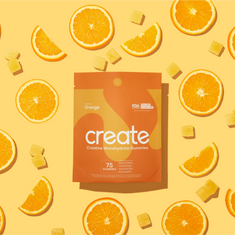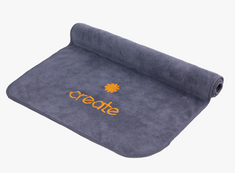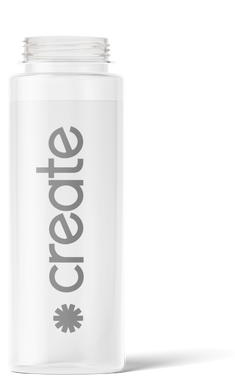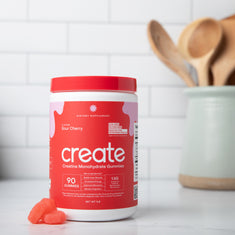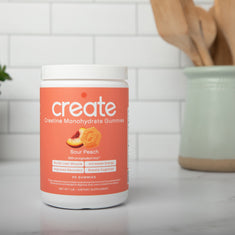Is Creatine Supplementation Good For Dancing And Does It Improves Stamina
Is creatine good for dancing? Discover how creatine improves muscle power, endurance, and growth. Learn safe dosage and dietary integration tips.
Many athletes and fitness enthusiasts praise creatine supplementation for its remarkable benefits in resistance training, including increased body weight and lean mass. Creatine enhances muscle strength, power, and endurance while also improving skeletal muscle and lean mass. But what about dancers? Is creatine beneficial for them? The answer is a resounding yes.
Creatine can significantly impact dance performance by enhancing explosiveness, stamina, and overall muscular endurance. By boosting the body's energy production during high-intensity movements, creatine helps dancers surpass their limits and perform with greater strength and agility. This positively influences their body composition and skeletal muscle performance. Additionally, creatine aids muscle recovery, enabling dancers to train harder and more frequently without risking injury.
Benefits Of Creatine For Dancers
Creatine offers a few different benefits for dancers in particular, such as:
Improved Muscle Performance And Power
Improved muscle performance and power are key benefits of creatine supplementation. Athletes and fitness enthusiasts often turn to creatine because it elevates phosphocreatine levels in the muscles, resulting in enhanced performance and power output. By increasing energy availability for muscle contractions, creatine enables athletes to push harder during workouts and training sessions.
For dancers, enhanced muscle performance can significantly impact their ability to execute high-intensity movements such as jumps, turns, and lifts. These dynamic actions require explosive power and strength, qualities that can be enhanced with creatine supplementation. By incorporating creatine into their training routine, dancers may notice improvements in overall performance, allowing them to execute complex choreography with precision and ease.
Increased Energy And Endurance
Using creatine as a supplement can significantly enhance energy levels and endurance for dancers. Creatine is known for increasing the body's adenosine triphosphate (ATP) production, the primary energy source for muscle contractions. This results in dancers feeling more energized and able to sustain their performance level for longer periods of time.
With increased energy and endurance, dancers can push themselves harder during rehearsals and performances, improving overall performance quality. They can execute more difficult choreography with better precision and agility without feeling fatigued prematurely. This also means that dancers can perform for longer periods without getting exhausted, leading to more impressive and engaging performances for the audience.
Enhanced Muscle Growth And Mass
Creatine helps to increase ATP production, providing more energy for intense workouts and muscle building, ultimately improving body composition and increasing lean mass. This can result in improved strength and muscle gains over time. However, dancers may worry about maintaining a lean physique while taking creatine. It's important to remember that creatine doesn't cause excessive bulking - it mainly helps with strength and endurance. By combining creatine with a balanced diet and regular cardio, dancers can still achieve their desired lean physique while benefiting from enhanced muscle growth and mass.
How To Incorporate Creatine In A Diet
Creatine can be a beneficial addition to a dancer's diet, as it can help increase muscle strength and power, improving performance and endurance. Here are a few tips on how to incorporate creatine into a dancer's diet:
Recommended Daily Intake Of Creatine
Dancers looking to improve their strength and endurance can benefit from a daily intake of creatine supplementation during resistance training. 3-5 grams of creatine monohydrate. This dosage range is widely recommended for athletes looking to enhance their performance. By consistently consuming this dosage, dancers can experience improvements in their overall strength and endurance levels. This can enhance performance during rehearsals and performances, allowing dancers to push themselves further and achieve their fitness goals.
Selecting The Correct Types Of Supplements
When selecting the correct types of supplements, it is important to consider the various options available for creatine supplements. Creatine monohydrate is often touted as the most researched and effective option, with numerous studies backing its benefits for improving strength and muscle mass. Other types of creatine, such as creatine hydrochloride or creatine nitrate, may have limitations, such as a lack of research or lower absorption rates.
Creatine Loading Phase And Maintenance Phase
The concept of a loading phase The purpose of creatine supplementation is to quickly saturate the muscles with creatine to maximize its benefits for improved vertical jumps and medicine ball throws. During the loading phase, consuming 20 grams of creatine per day for 5-7 days is recommended. This higher intake helps rapidly increase the creatine levels in the muscles. Once the loading phase is complete, it is important to transition to the maintenance phase, where a lower dosage (3-5 grams per day) is sufficient to maintain elevated creatine levels over time. Following these phases is essential for achieving optimal results and maximizing the benefits of creatine supplementation.
Creatine-Rich Foods To Include In The Diet
When enhancing performance and muscle recovery, dancers can benefit from including creatine-rich foods in their diet. Some suitable options include red meat, fish, beans, lentils, and nuts, all valuable for those in strength training. These foods are excellent sources of natural creatine, which can help improve muscle strength and endurance. By incorporating these foods into their meals regularly, dancers can increase their creatine intake and see improvements in their overall performance on stage.
Guidelines For Safe And Effective Creatine Use In Dance
When considering dance for athletes, it is imperative to follow recommended dosage guidelines for creatine consumption carefully. Studies and experts suggest a daily intake of around 3-5 grams of creatine for optimal benefits. The timing of creatine supplementation in exercise supplements is crucial to its effectiveness. For dancers, it is advisable to take creatine post-workout to aid in muscle recovery and growth. Moreover, a balanced diet rich in nutrients is essential to complement creatine usage and maximize its benefits for dance training sessions and performances.
Regular dance training and exercise play a crucial role in maximizing the benefits of creatine while supporting overall health and performance. Dancers can enhance their strength, power, and endurance on stage by incorporating creatine supplementation into a well-rounded fitness regimen. To mitigate these risks, dancers should focus on staying hydrated and consulting with a healthcare professional before starting supplementation, considering their total body water and body weight.

